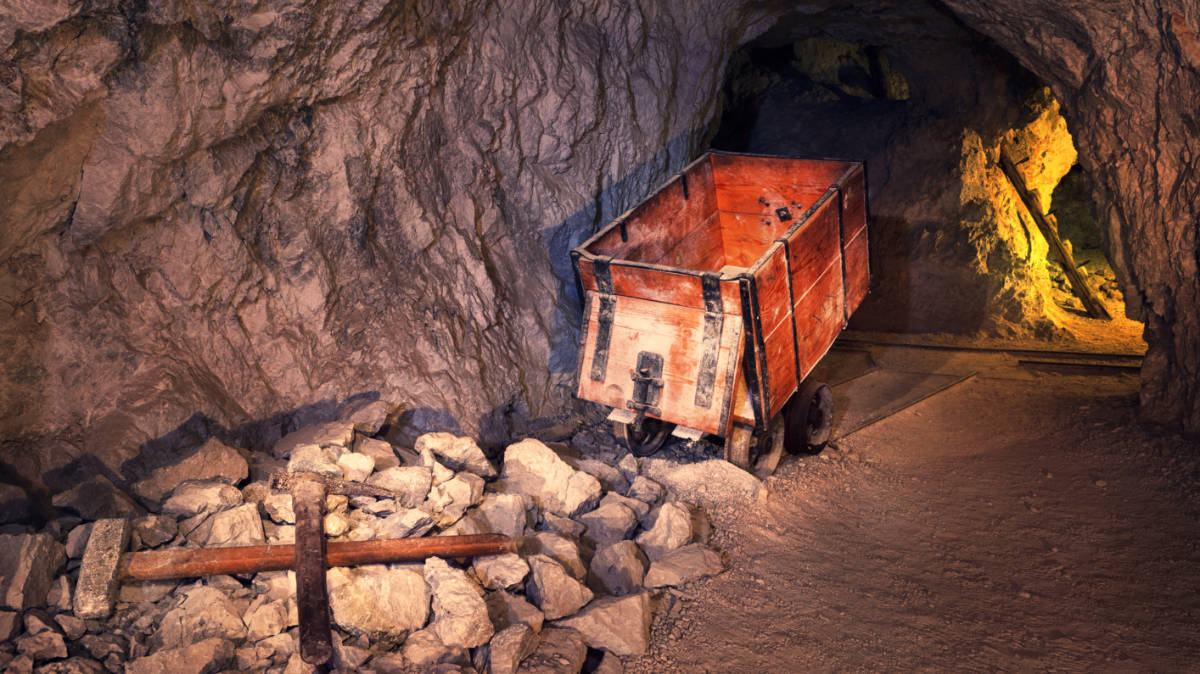Back to the Future: ASX juniors mine the past for future gold

Legacy sites spark a fresh gold rush for these junior mining stocks. Pic: Getty Images
- With Aussie gold prices above $5,000/oz and exploration tools evolving, junior miners are reviving previously uneconomic or abandoned deposits
- ASX juniors are snapping up old mines with existing infrastructure, dodging red tape and accelerating their path to gold output
- Here are some good examples of small gap goldies doing exactly that
The old adage that the best place to find a new mine is near an old one continues to hold true more often than not, particularly in well-known gold hotspots.
Australia’s outback is littered with the remnants of once-thriving operations that fell victim to falling metal prices, technical challenges, or simply running out of known ore.
But with Aussie gold prices pushing past the $5,000 an ounce mark and exploration technology changing fast, a new breed of junior miners is breathing life into these previously uneconomic and dormant deposits.
Building a mine from scratch is expensive, time-consuming, and fraught with regulatory hurdles that can derail even the most promising discoveries.
By acquiring former producing assets complete with existing infrastructure, these ASX goldies are bypassing the lengthy development queue and setting themselves up for a fast-track route to production.
A fresh face to join the gold-copper producers club
Medallion Metals (ASX:MM8) is capitalising on existing processing infrastructure recently acquired from IGO’s Forrestania nickel operation to fast-track into gold and copper production at its Ravensthorpe project.
The agreement includes the existing Cosmic Boy processing plant and equipment, infrastructure, inventories as well information including mineral rights other than nickel and lithium.
It forms a key part of Medallion’s plan to take Ravensthorpe to a final investment decision in late 2025 with IGO retaining the rights to explore for, develop and mine nickel and lithium minerals over the tenements.
The appeal of the deal lies in the fact that it requires neither upfront nor deferred cash payments, with IGO (ASX:IGO) instead receiving a net smelter royalty of up to 1.5% on all future gold production from the tenements as consideration for the acquisition.
The ~300km2 Ravensthorpe project is centred on the historical Kundip mining centre, which consists of numerous mineralised structures with varying levels of exploration and mining activity dating back to the early 1900s.
Big players, bold juniors and a whole lot of gold
With more than 30Moz of historical production, WA’s Murchison ranks among the most sought-after gold territories globally.
The region boasts some of the big-league players like Westgold Resources (ASX:WGX) and Ramelius Resources (ASX:RMS), but it’s also a bustling playground for mid-tiers and small cap goldies like Odyssey Gold (ASX:ODY), which acquired the 80%-owned Tuckanarra gold project in 2020 when gold was floating around A$25000/oz.
Since then, gold prices have doubled to over A$5,000/oz in the past two years, and Tuckanarra has grown into a 407,000oz open-pit resource at 2.5g/t, 311,000oz of which sit on existing mining leases.
It even has a processing solution set up, with material likely to be trucked and milled through 20% minority JV owner Monument Mining’s mothballed 260,000tpa mill at Burnakura, where plans are being drawn up to reopen and expand the plant to 750,000tpa.
The Tuckanarra site has a long mining history, with gold discovered in 1894 and a state battery established in 1898.
Around 20,000m3 of tailings from this early production period remain securely stored in two bunded stockpiles.
What was once considered waste could now meet economic thresholds for gold, and offers a lower-cost, more accessible alternative to traditional underground mining.
About 5000m of drilling is on the way, with technical studies and work ongoing to extend the share of indicated ounces in the Tuckanarra resource so a JORC compliant scoping study can be eventually delivered.
Arika’s golden revival begins
Leonora-Laverton explorer Arika Resources (ASX:ARI) caught investor attention in April after the first diamond drilling results hit paydirt at the Pennyweight Point prospect, one of two high-priority at its Yundamindra gold project.
The project, which sits within 50km of the multi-million-ounce Wallaby, Granny Smith, Sunrise Dam and Apollo Hill gold deposits, is surrounded by elephants – the Leonora-Laverton district is known as “elephant country” and the term elephant refers to multi-million ounce gold deposits. Naturally, then, the company is on the hunt for elephants itself.
Drilling conducted at the site since May 2024 marks the first exploration activity in ~20 years, with less than 1% of the known structures having been drill tested to date.
Yundamindra sits about 65km east of Arika’s Kookynie asset, with the historical Compolitan Mine serving as the focal point of the project.
From 1886 to 1922, Cosmopolitan produced 360,000oz at an average head grade of 15g/t gold, confirming that the area can host high-grade, economically viable gold deposits.
And there’s potentially more gold to be found with Arika using recent survey insights to drive upcoming drill campaigns in the coming weeks.
So far, two promising gold targets have also been defined at the Cosmopolitan prospect just 2km NW of the historical Cosmopolitan mine.
These targets may be an extension of the structural trend linked to the McTavish East deposit, or alternatively, a separate, parallel structure to Cosmopolitan.
Tapping historical goldfields in Nevada and NSW
Sierra Nevada Gold’s (ASX:SNX) Blackhawk project is situated within Nevada’s Excelsior Mountain range, comprising 636 contiguous 20-acre claims over 49km2.
At least eight historic mining areas were operated in the Blackhawk epithermal vein system between the 1860s and the early 1900s, the main mining areas being around the Endowment, Morning Star and Blackhawk mines.
The epithermal vein system covers an area of approximately 5km2 and contains up to 22.5-line kilometres of mostly untested veins.
Sierra Nevada has obtained bonanza grade precious and base metal rock chips from the epithermal vein system and has a suite of drill ready targets.
Recent assays have confirmed high-grade silver and copper – returning up to 3,460g/t Ag and 4.52% Cu – while geophysical work using Dipole-Dipole IP has sharpened the vertical picture of key vein systems.
Continued field exploration programs are planned through 2025, focusing on geological mapping and geochemical and spectral sampling.
And Vertex Minerals’ (ASX:VTX) ground in NSW’s East Lachlan Fold Belt has historically produced more than 1.8Moz of gold with its Reward gold mine boasting a resource of 19,000t at an eye-watering 16.7g/t gold for 225,000oz of gold.
About 70,500oz of that sits within the higher confidence category and its Gekko processing plant is believed to be ideally suited to the free milling, high-grade ore found at the underground mine and will also reduce water demands, which will further boost margins.
The company is now on its way to high-grade gold production with the start of underground mining at the beginning of August.
The start-up mine schedule includes mining 2075t at 17.8g/t gold from a developed airleg stope block. The planned stope width is the same as the interpretation of the mineralisation.
Given the stope will take some time to extract, the company has brought forward a very high-grade long hole stope to commence mining in August 2025.
At Stockhead we tell it like it is. While Medallion Metals, Odyssey Gold, Arika Resources, Sierra Nevada Gold and Vertex Minerals are Stockhead advertisers, they did not sponsor this article.
Related Topics

UNLOCK INSIGHTS
Discover the untold stories of emerging ASX stocks.
Daily news and expert analysis, it's free to subscribe.
By proceeding, you confirm you understand that we handle personal information in accordance with our Privacy Policy.








